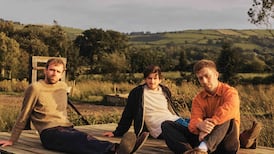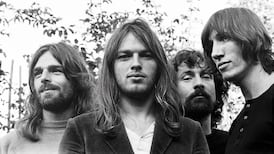On the cover of his 1969 debut album, the English singer-songwriter Nick Drake gazes out of an upstairs window in a derelict house, a faintly quizzical smile on his lips. Five Leaves Left was the first of three low-selling LPs he made before he took his own life in 1974, convinced he was a failure. Had he lived to witness the reverence his music has gone on to inspire across the world, his smile would surely be of outright incredulity.
There are several possible reasons for his ever-growing reputation. Most superficially, his early death has fixed him in the “poète maudit” tradition of John Keats, Arthur Rimbaud, Rupert Brooke and even Jim Morrison (all of whom he admired). Tall, dark and handsome, with a gently enigmatic aura, he projects a powerful charisma in photographs. “He looked striking, like a Romantic poet,” says his friend Chris Jones. “He tended to dress in dark, sombre colours – nothing bright. He often wore a rollneck, and in winter what used to be called a greatcoat. He cut quite a famous figure in that – part of his mystique was the sight of him coming down the street in it.”
Drake’s background did not point towards the classic narrative of a doomed artist. He came from a loving and supportive family and grew up in comfort in a large house in the English countryside. Although he was gentle and self-contained, he had a wry sense of humour and was popular at boarding school, where he excelled at athletics. Music was increasingly his focus, though, and his talent was encouraged both at school and at home: his mother, Molly, was an accomplished songwriter and poet.
By the age of 18 his guitar playing was good enough to impress the Rolling Stones, with whom he had a private audience in 1967 in Marrakesh, where he was travelling before starting at Cambridge. University didn’t suit him, but his blossoming talent stunned his contemporaries, most notably Robert Kirby, a music scholar who began to arrange the material he was writing. “I was astounded by the sheer inventiveness and absolute quality of his songs,” he says of their first encounter. At the end of Drake’s first term, just before Christmas 1967, he played his first public concert, a short set at a London “happening”. In keeping with his seemingly effortless rise, he was talent-spotted and signed up by the producer Joe Boyd.
READ MORE
Boyd was also stunned when Drake played him his songs, in January 1968. As he instantly recognised, they were sui generis. “The music stayed within itself, not trying to attract the listener’s attention, just making itself available,” says Boyd. “His guitar technique was so clean it took a while to realise how complex it was. Influences were detectable here and there, but the heart of the music was mysteriously original.” Indeed Drake’s songs, which teem with unusual tunings, melodies and countermelodies, are the most important factor in his ongoing appeal. His work is lyrically striking, too, rich with imagery yet cryptic enough for each listener to devise their own private relationship with it.
His guitar playing also inspires – and flummoxes – many of his admirers. “Nick was an absolutely phenomenal guitarist,” Kirby said shortly after Drake’s death. “He was very adept at highly complex double-picked rhythms, with the thumb on the bass string and the other fingers working on as many as four tunes at a time. He was a master of counterpoint.” For Drake’s friend Ben Laycock – himself a good guitarist – his playing was a revelation: “I’d never met anybody of my age who could do anything that well – just magically get those sounds out, strong fingers flying across the fretboard ...”
Drake’s first two albums were made with Boyd and the engineer John Wood, who went to great lengths to create the best possible recordings. They were committed to bringing out the best in the material, however long it took. “The way I worked with Nick was very different from the way I worked with other artists,” says Boyd, referring to the Incredible String Band, Fairport Convention, Sandy Denny, Vashti Bunyan, John and Beverley Martyn and others. “With them we tended to go in and do a record in a concentrated period of time, but with Nick we worked slowly. We went in, did a couple of tracks, listened to them, thought about what we wanted to do with them, worked on them a bit more, put down a few more tracks, waited a month, waited six weeks, thought about it some more.”
The fact that Nick’s music failed to find an audience during his lifetime means it’s not identified with a particular time and place, which allows each generation to create its own connection to it
This was a luxurious position for an unknown artist to be in, and allowed Drake to keep his head above water at Cambridge while working on his music. After the release of Five Leaves Left he chose to drop out of college in order to focus fully on its follow-up, Bryter Layter. Sequestered in a shabby north London flat over the winter of 1969, he perfected another remarkable set of songs, continuing to collaborate with Kirby. Again, Boyd and Wood hired the best possible backing musicians and strove to deliver a masterpiece that also had commercial potential. “It’s the only album I’ve ever recorded where I wouldn’t want to change a thing,” says Wood. By all contemporaneous accounts, Drake was delighted with it.
Its release kept being pushed back, however, and he found it hard to make an impression at gigs. He had always been reticent, but over the course of 1970 he became antisocial and almost impossible to communicate with. Dope smoking didn’t help, but it was hardly the sole cause of the radical change in him. “It wasn’t the old Nick; it was a different Nick,” says his friend Ben Laycock, who visited him in his flat, which he rarely left. “I can’t explain it. I’ve never been able to. I would ask him why he was so down – things seemed to be going well – and he wouldn’t say, or couldn’t say.”
The failure of Bryter Layter to find an audience was crushing, and after Drake had completed his third and final album, Pink Moon – which featured none of the lush orchestral trappings of its predecessors – he returned to live at home, where his decline relentlessly continued. Whether he was suffering from a specific disorder such as clinical depression or schizophrenia is moot, but he was consistently reluctant to engage with treatment, and for much of the time his family and friends could only look on helplessly as his illness ravaged his creativity.
[ This Album Changed My Life: Nick Drake – Pink Moon (1972)Opens in new window ]
Although his family saw no shame in his condition, and focused on doing whatever they could to understand and ameliorate it, Drake was inevitably sensitive to the stigma surrounding mental health in the early 1970s. He spent periods in a psychiatric hospital in Warwickshire, where his friend Brian Wells visited him. “His main preoccupation was with emphasising that it wasn’t a ‘nuthouse’ or a ‘loony bin’ and that he wasn’t a ‘nutcase’,” says Wells. With far greater awareness today of how mental illness blights young lives, he stands as a beacon of sorts for many with struggles of their own, while others feel a powerful sense of pity and affection for him in his suffering.
Although his low record sales agonised Drake, he wasn’t hungry for fame and fortune as much as communication. “He had always longed to get through to young people, particularly young people who had difficulties in life like he did, and he just thought he hadn’t,” according to his mother. The extent to which his suicide has played a part in boosting his appeal is impossible to gauge, but momentum swiftly gathered after his death.
Five Leaves Left was finally released in the United States in March 1976, with ardent sleevenotes that praised his “masterful musicianship”, described him as a visionary and declared: “Life speaks for itself through Nick Drake.” They were written barely a year after his death and indicate how his reputation was growing. In April 1979, Island Records repackaged all three of his albums (and four demos he made shortly before his death) as Fruit Tree, one of the first retrospective boxed sets accorded an artist of his generation, and a striking indication of his increasing renown. It was followed in May 1985 by a compilation, Heaven In a Wildflower, while in 1986 Joe Boyd oversaw a collection of previously unreleased material, Time of No Reply.
Drake’s renown has never slowed since, his popularity growing with each reissue or use in film and on television. In despair, he had told his father in July 1972 that “he’d finished his life’s work and had done more than many in a lifetime. One day people would realise.” The fulfilment of those words helped his parents and sister reconcile themselves to his absence, and Boyd has come to understand that his short-term obscurity has yielded a long-term benefit. “The fact that Nick’s music failed to find an audience during his lifetime means it’s not identified with a particular time and place, which allows each generation to create its own connection to it ... I listen to the music now and it sounds the same as when I first heard that first demo. I thought his songs were genius and I still do. He was a unique and brilliant talent, and it’s heartbreaking for me that I didn’t think of a way to make him happy and famous.”
Nick Drake: The Life, by Richard Morton Jack, is published by John Murray


















